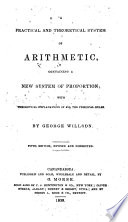 | George Willson - Arithmetic - 1838 - 194 pages
...PROBLEM IV. — Given the first term, last term, and common difference, to find the number of terms. RULE. — Divide the difference of the extremes by the common difference, and the quotient increased by 1 is the number of terms. 7. A man travelling a journey, went 18 miles the... | |
 | George Willson - Arithmetic - 1838 - 194 pages
...PROBLEM IV. — Given the first term, last term, and common difference, to find the number of terms. RULE. — Divide the difference of the extremes by the common difference, and the quotient increased by 1 is the number of terms. 7. A man travelling a journey, went 18 miles the... | |
 | Frederick Emerson - Arithmetic - 1839 - 300 pages
...miles travelled. PROBLEM in. The extremes and common difference given, to find the number of terms. RULE. Divide the difference of the extremes by the common difference, and add 1 to the quotient; the sum will be the number of terms. The difference of the extremes divided by the number of the terms... | |
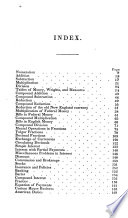 | Benjamin Greenleaf - Arithmetic - 1839 - 356 pages
...miles, 2 rods. PROBLEM HI. Given the extremes and the common difference, to find the number of terms. RULE. Divide the difference of the extremes by the common difference, and the quotient increased by one, will be the number of terms required. 9. If the extremes are 3 and 45,... | |
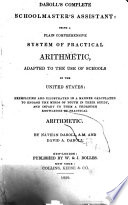 | Nathan Daboll - 1839 - 220 pages
...yards. CASE IV. TAe first term, last term and common difference given, to find the number of terms. RULE. Divide the difference of the extremes by the common difference, and the quotient increased by 1, will be the number of terms. EXAMPLES. 1 . A man bought cloth in arithmetical... | |
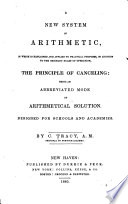 | Calvin Tracy - Arithmetic - 1840 - 316 pages
...8+1=9, the whole number of terms, or answer required. From the above we derive the following rule : RULE. — Divide the difference of the extremes by the common difference, and add one to the quotient. 2. A man commenced a journey, and traveled the first day only 4 miles ; after... | |
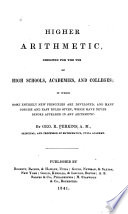 | George Roberts Perkins - Arithmetic - 1841 - 274 pages
...the first term, the last term, and the common difference, to find the number of terms, wo have this RULE. Divide the difference of the extremes by the common difference, and to the quotient add one. Examples. 1. The first term of an arithmetical progression is 5, the last... | |
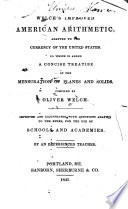 | Arithmetic - 1841 - 200 pages
...CASE IV. Given the first term, the last term, and the common difference, to find the number of terms. RULE. — (') Divide the difference of the extremes by the common difference, and the quotient increased by one is the number of terms required. Question. — 1. The first and last... | |
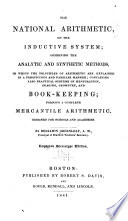 | Benjamin Greenleaf - Arithmetic - 1841 - 334 pages
...miles, 2 rods. PROBLEM IIL Given the extremes and the common difference, to find the number of terms. RULE. Divide the difference of the extremes by the common difference, and the quotient increased by one, will be the number of terms required. 9. If the eXtremes are 3 and 45,... | |
 | Nathan Daboll - Arithmetic - 1843 - 254 pages
...140.) CASE IV. The first term, last term and common difference given, to jind the number of terms. RULE. Divide the difference of the extremes by the common difference, and the quotient increased by 1, will be the number of terms. EXAMPLES. 1. A man bought cloth in arithmetical... | |
| |